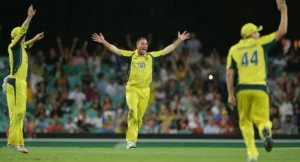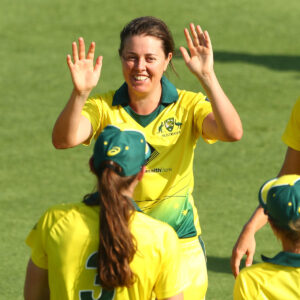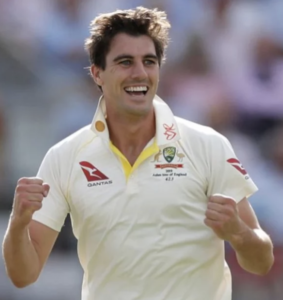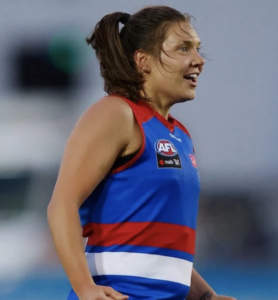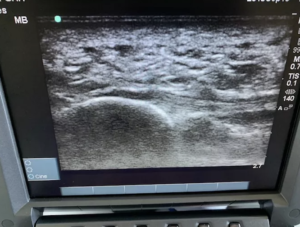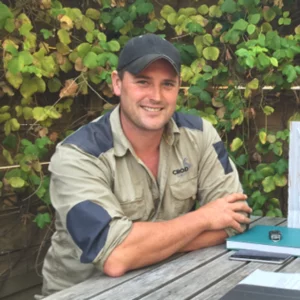
by Sam Davies
John Hastings burst on to the cricket scene in 2010, leading Victoria in wickets across all three formats. This earned John the Bradman Young Cricketer of the Year Award and consistent games in the Australian white ball sides. In 2012, John debuted for the Australian Test team but ongoing lower limb injuries and a mystery lung condition forced him into early retirement. Our podiatrist, Sam Davies sat down with John to find out more.
SD: Thanks for meeting with us today, John. We all know you as an Australian cricketer, especially in the shorter forms of the game. I understand you grew up playing rugby as well. Is this true?
JH: Yeah, that’s right Sam. Thanks for having me on. I grew up in a little town just out of Penrith, where the mighty Penrith Panthers are. So, I played a lot of rugby. I went to a predominately rugby league school, St Dominic’s College in Penrith. But I grew up in a little town called Londonderry, in the Hawkesbury area, closer to Richmond. It’s a very rugby union/ rugby league territory so I spent a lot of my youth playing both of those, among a lot of other sports while out in the sticks in Hawkesbury.
SD: What made you choose cricket over rugby? JH: I got injured when I was 17 or 18 while I was playing rugby and to be fair I probably wasn’t tough enough to play rugby. I always loved cricket and it was something I excelled at as a junior. It was easy to make that sort of connection with cricket, which is why I kept playing it over league and union.
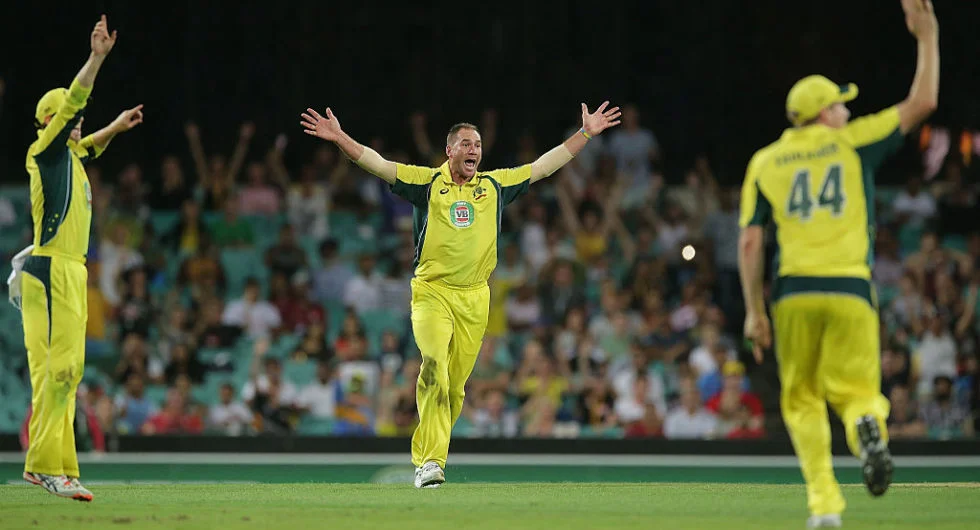
Credit: Photo courtesy of Wisden Cricket
SD: Skipping ahead to when you were 22 years of age, you pack-up and make the move down to Melbourne to pursue your cricket career. How did that come about?
JH: Honestly, I was playing club cricket in Wimbledon in the UK and Greg Shipperd [then Victorian cricket coach] rang me halfway through that summer. Victoria had what was called a Tattersalls Tour as it was known back then. He literally said, “Do you want to join the tour?” I did and then afterwards he said, “Do you want a 2-year contract?” Absolutely I did. I think I was only going to get a rookie contract with New South Wales.
I flew home, packed up everything into the old Ford Falcon and drove straight down the Hume to Melbourne. Straight to a training session. Literally, 4am I left Hawkesbury and got down in time for training that afternoon. That was it, the rest is history. I’ve been down here in Victoria since 2006 so it’s a long time now.
SD: Once playing for Victoria, you burst on the scene quickly. In only your second year you are the leading wicket-taker in all three formats. You also make the final in all three, and are awarded the Bradman Young Cricketer of the Year. How was the body at this stage? I imagine you were flying.
JH: It was actually quite the opposite. I had a shoulder reconstruction when I was only 18. I had a lot of issues with my feet as well, funnily enough. I had ankle surgery to remove an os trigonum [extra bone that can form behind the ankle], which is a typical fast bowler’s injury.
I was always in with the podiatrist getting my feet looked at. Making sure I could get some orthotics that were going to support what was going on with my body. I’m really flat-footed so my knees and ankles were always an issue. Plus, my shoulder was reoccurring.
So, when it came to 2010 when we [Victoria] won the Sheffield Shield, I went in for shoulder surgery the next week. I had to get a tighten-up because one of the anchors had become a little loose. Then two weeks after that shoulder surgery had been done, I had my ankle cleaned out again.
After that season it was a long road to recovery. I had to rehab a shoulder and an ankle, which made for a very painful winter and took me awhile to come back from that.
SD: That’s incredible that you had all that going on yet were still able to perform at such a high level.
In 2012 you get the call-up to the Australian Test team, playing against South Africa. You come in and take the wicket of AB de Villiers and make some handy contributions with the bat. At state level the longest you play is 4 days, whereas with international cricket this can increase to 5 days. How did you go adjusting to the longer format?
JH: Yeah, I’ve always loved batting so it was easy for me to be fit enough for that part. It was just about getting the bowling volume in my body. For me, I’ve never shirked the issue when it came to training. I used to love trying to be the fittest and strongest in the squad.
I learnt from a very young age that you have to do rehabilitation and training properly. I don’t think I did that with my first ankle operation and my first shoulder reconstruction. I wish I could have turned back the years and been able to listen to the physios and the doctors when they tell you the importance of rehabilitating your injuries. I probably didn’t give it enough attention. I was a young kid, being only 18 or 19 so things tend to bounce back a lot quicker than it does when you are 25 to 35. So [leading up to the Test call-up] I just rehabbed everything to the nth degree to make sure I was going to be alright. After those injuries it took me awhile to get back and have the confidence in my body. But by the back-end of the 2011 season, I came back and played a few games. I did pretty well and then had another good preseason up at the Cricket Academy. That was great because I had missed most of the previous summer, so at the Academy I got my body cherry-ripe to start the new season really well. This allowed me to come into the 2012 summer ready to hit the ground running.
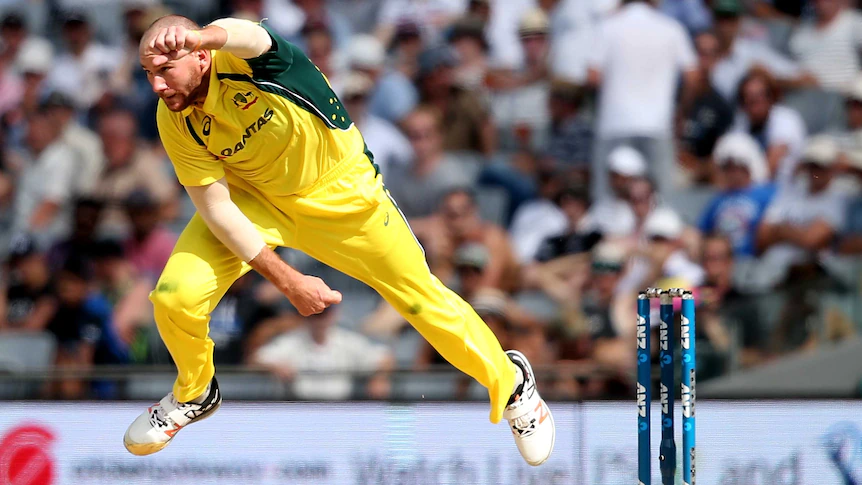
Credit: Photo courtesy of ABC
SD: One of the major reasons for our interview today was to talk about your 2016 cricket season. Looking at your figures it was probably your most successful year. You were 2nd in the world in One-Day International wickets. Yet then you developed patella-femoral tendon pain, which required surgery. What happened there?
JH: Yeah I didn’t think much of it at the time. Just had a sore knee now and then. I tried to brush it off with these things being part and parcel of a fast bowler. You’ve always got some underlying niggle. I don’t think the general public realise just how hard fast bowling is on your body. It really takes its toll, especially physically. Fast bowling is just a hard, unusual thing to put your body through. So when you get little niggles here and there, you don’t worry too much about them.
However, this knee pain kept getting worse. I was taping it, but it remained pretty sore around the front of my patella [knee cap]. I was bowling in a Shield game down in Tasmania. When I came in to bowl, I jumped up and landed on my back foot and I heard the knee go “pop.” I couldn’t walk on it. Even the doctors and the physios at the time were thinking it was my PCL or that I had snapped my patella tendon. But literally what had happened was a chunk of my patella had cracked off the bone and taken a little bit of the tendon with it.
I thought it was “curtains;” that I was done. Thinking that it was a snapped patella tendon, I knew it wasn’t good news. I had Dr Google out, having a look at articles, which made me believe that this was it.
To be fair, I don’t think I was the same after my knee injury. I got it cleaned out by David Young, who is the best in the business here in Melbourne, perhaps even Australia or the world. He always did my lower limb stuff. He did 5 of my ankle surgeries. [With the knee] it was just one of those things. It went “crack” and “pop” so had to get it cleaned out, which meant I had a lengthy 6–8 month rehab.
I went over the next season and played for Worcestershire in order to get back into that [Australian] One-Day International side. My knee wasn’t ever the same unfortunately. It took a long time to get right, just kept feeling so sore. Fortunately, I did end up getting back and into that Champions Trophy side in 2017 but we got knocked out by New Zealand.
It felt like the knee injury was just another rung back. My whole career I felt like I was just getting there, getting there, getting there, pushing myself only to be knocked back down the ladder and having to start again. It was mentally tough.
SD: You mentioned 5 ankle surgeries. Is that right?
JH: Yeah, I’ve had 5 ankle surgeries. The first was when I was 18, had spurs around the front and back of my ankle, which caused a lot of achy, dull pain. Almost like that constant pain you get from a headache. I have flat feet and always had issues when I was growing with knees, ankles and lower back.
So yeah, it was 5 ankle surgeries, pretty much clean-outs. One major ankle surgery because I had a deformity called a coalition joint that was fused together. Didn’t want to separate. So, I had that to contend with my whole career until finally they said, “let’s get that out.” I woke up [from that surgery] thinking it just be another clean-out but they had liposuctioned and packed the back of my ankle with fat, plus all this other stuff. I just thought, “what is going on?”
Ankles and shoulders were my main injuries as I was going through my career. I’ve also got degenerative discs in my back and facet joint injuries. I’ve had three or four of those [facet joint injuries] including one of them in the Test match I played up in Perth. They were pretty bad. I used to get them injected with cortisone to make sure they would heal up quicker. Other than that, I never really did any sort of soft tissue injuries. It was more chronic, grinding injuries.
SD: I don’t mean to make this entire interview a doco-series on John Hastings list of injuries but when you mentioned having a tarsal coalition [an abnormal fusion of two or more bones in the hindfoot] this is something that is usually diagnosed between the ages of 8-16. Was that the case with you?
JH: Yeah, it was. They [doctors] had said to just see how it goes. If it causes no issues just keep ploughing ahead. So that’s what I did.
It wasn’t until I started bowling as a 17 or 18 year old when I had a growth spurt that it became an issue. I wish I had it sorted out when I was younger. It would have made it a lot easier.
SD: When you finally got over the patella tendon injury and started back with Worcestershire in the UK, I understand you suffered another setback. This time a stress fracture in your foot. What bone did you fracture?
JH: It was just under the ankle, on the outside. It’s tough to explain as the scans on my ankle were always pretty bad. It was never good. Used to light up like a Christmas tree everywhere. But there was a significant change [with this particular scan]. I used to get scanned regularly because it [the ankle] was such an issue.
That was pretty tough to take. Because what I think was happening, with the trouble with my knee at the time as well, I was putting more pressure through my front leg when I was bowling. Just because I was trying to get off my back leg because it was still hurting. So, it was one or the other. It didn’t work out, which was a shame because I loved my time at Worcestershire. It was such a good club.
SD: Going in a different direction for a moment. We did an interview with Molly Strano, the leading wicket taker of all time in the WBBL. She was first selected as a batter for Victoria but made a career being a terrific off-spinner. Were you always a bowler?
JH: That’s exactly what happened with me. When I was younger, playing with Penrith I won all the batting awards. I was just a bit bigger and could hit it fairly powerfully. For me, I was always a batter. All the way through until I was 15 or 16. Then I had a really big growth spurt. I was already tall, but I just thought fast bowling looked too hard. Turns out it really is too hard.
Our school coaches kept saying “you’ll be a bowler mate. Just keep grabbing the ball.” Although I kept batting, I had this horrific bowling action. I used to bowl massive in-swingers so really had to try to work on my action when I first came into the U17s and U19s squads at New South Wales.
It was an interesting journey but was always a batter.
SD: Funny you should mention the powerful hitting. I have these distinct recollections of you playing for Melbourne Stars. You would hit a six up to the second tier at the MCG. Yet on slow-motion replay you could see the ball didn’t connect anywhere close to the middle of your bat. Luckily it didn’t or the ball would’ve ended up on Punt Road. JH: Honestly, the boys used to give me a lot of grief for that. [After the ball went over the boundary] I always used to say “I didn’t get that one” but it used to go for miles. Honestly, I very rarely hit one out of the middle when it went for six; I promise you that.
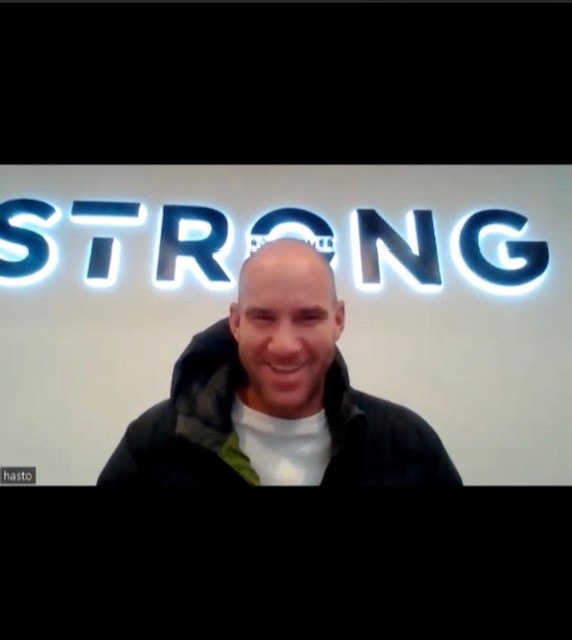
SD: In 2018 you had dealt with the knee injury and ongoing foot problems. Yet you were then sidelined with a mysterious lung condition that forced you to retire from cricket for good. What happened there?
JH: It was a really interesting one because throughout my entire career I had little spurts where I’d be coughing up blood. I always put it down to times where I was taking a lot of anti-inflammatories to get injuries right, or painkillers and the like.
It didn’t really start to happen a lot until I got to 2016/17 season. I was coming back from injury and taking a lot of painkillers and anti-inflams, so thought it was something to do with that.
Then it progressively got worse. It used to only happen in games when I was putting in 100% effort but then it started to happen when I was at training. I remember standing next to Micky Lewis our old bowling coach one day and I said, “Hey look at this!” I was coughing up a lot of blood at training. He just looked at me and said, “Mate that isn’t right. You’ve got to go and get that sorted out.” I left it for another few weeks as I was trying to captain the Melbourne Stars at that stage as well. Dealing with [the lungs] and the pressures of captaincy was pretty tough.
I went and got it checked out. Had bronchoscopes, angiograms and stress tests on the treadmill to try and replicate that same pressure and same feeling of coughing up blood. I remember being on a treadmill at the Epworth in Richmond, going up inclines and then back down, running flat-out trying to replicate that feeling but it would never work. Even now, I still work out every day at our gym in Mornington [STRONG Pilates] but I can’t replicate that same pressure that was happening when I was bowling at the crease. They say 9x your body weight goes through your front side when you are bowling. And I used to hold my breath a bit when I was bowling as well. I used to hold it, get to the crease and then let all that exertion out.
They [the doctors] just put it down to a bit of vasculitis that I had in my lungs. They wanted to do some more intrusive testing, even putting a cord down into me when I was bowling. But I had had a good career and they couldn’t guarantee me that I wasn’t going to get any long-term damage. Whether it was going to have a big bleed or cause me illness or death on the field. I didn’t really want to go down that path.
Yet day to day life now, everything is fine. It hasn’t happened again since I’ve stopped bowling at that high level. I even rolled the arm over for Kew last year off a few steps and it didn’t happen.
It was a really strange thing and a lot of unknowns about it that I wasn’t comfortable with. Neither were my family, my wife, Bree, they were pretty happy for me not to take that risk on. It was an interesting time, that’s for sure. It’s still pretty much unanswered.
SD: I have newspaper headlines here in front of me where they frequently use the term “fatal bleeding” to describe your condition. I mean, that’s not an injury. That’s your life.
JH: That’s exactly right. There were a lot of unknowns. Long term things they just couldn’t answer. They [the doctors] really hadn’t seen it much before. A couple of Olympic weightlifters had it in the past where they had burst the blood vessels in their lungs and then start to cough up blood. But they hadn’t seen it in any rugby, cricket circles before. It was mainly Olympic heavy weightlifting. You can imagine the same thing [with the weightlifters] where they are trying to push an overhead snatch with the holding the breath and trying to get that exertion up like what I was doing with my bowling.
It’s just a really unique thing. Something I look back on and think “that was a really weird time.” So strange.
SD: Right now you have Mr Frankie, the café in Frankston. You also have Strong Pilates studio in Mornington. How are you? Not just with the lungs, but with all you lower limb injuries and shoulder surgeries. Are you in constant discomfort or is the body feeling good?
JH: I love working out and I love trying to stay fit. I used to do a lot of high impact, F45, body-fit style of training but it wasn’t until I came across the concept, we have here at Strong Pilates that I found a really unique style of workout. It’s really slow, really controlled. We use a lot of heavy weight dumbbells as well so it’s not your traditional style of pilates. It’s more of a hybrid, high intensity pilates. We’ve got a rowing machine built into our beds.
So for me, I can burn the same amount of calories, if not more. This morning we did a session called out climb session. I would burn 800 calories whereas normally if I was to go for a run, it would take me 7-9kms to get to that. So, I don’t run anymore. I literally just do this.
Our program is good enough that we incorporate some strength based phases as well. It’s really, really good. I love it and I get some of the other boys down. Like Maxy Gawn, Jake Lever, Pete Siddle and Scotty Boland. They’ve been down and done it. They’ve thought it’s amazing.
I’m more flexible now than ever before. I wish I had this when I was playing. It would’ve been a really good cross-training tool for me when I was playing cricket. So I’m trying to get the boys [other cricketers] to come down and have a go because I feel the benefits of it a lot.
My body is good. It’s really good. I’m glad this [Strong Pilates] is here as there is no impact forces. I used to get really joint sore. My ankles, knees and lower back. But by not having that impact and still being able to build strength is an absolute win-win. I’ve really enjoyed this ride over the last few years. It’s been amazing.
SD: I’m glad you mentioned the impact forces associated with sport. Clinically, as podiatrists we are always trying to alter the force and loads being placed on injured tissue. But once we have done so, we need to rehabilitate and strengthen these structures. So to have a studio like yours locally is a real plus.
JH: That’s absolutely right. We see some good results with people coming back from reconstructions and other surgeries. We work a really slow, controlled program. If you’ve heard of Lagree Fitness, it’s a big megaformer bed, which is essentially pilates but quite slow. Four seconds into a movement, four seconds out of a movement. Really drilling down into those stabiliser muscles you wouldn’t normally activate in a flow pilates class. It’s certainly unique and bucking the trend. It really works. I highly recommend it.
SD: Fantastic John. Just to finish I’ve got three off the cuff questions.
- You’re hosting a dinner party. What three people are you inviting?
JH: That’s a very good question. I reckon Brendon “Baz” McCullum. He’s a crack-up and a very good drinker.
Who else? I’d love to have Leo DiCaprio there. He’d be good to have a yarn to. And then maybe James Packer. Someone like him who is in a high echelon business position.
- Favourite holiday destination?
JH: Got to be Italy. We did a trip there after I retired in 2018. It was amazing. Loved it. We’ll have to get back there in the next couple of years now that travelling is back on.
- You’ve now played cricket at the highest level and worn the baggy green. If you could have another sporting achievement what would it be? AFL grand final? Olympic gold medal?
JH: Absolutely, hands-down winning a Melbourne Cup. I love my horse racing. I’m very passionate about it. My cousin actually calls the trotting races in Sydney, Freddie Hastings. I’ve grown up watching horses my entire life and just love it. I’m always having a flutter here or there. Also have some mates that have some good horses at the moment.
We’ve got one who will hopefully be running again soon. He won his first Australian start not long ago. So the dream is a Melbourne Cup. Even a Cox Plate or Caulfield Cup. That would be epic.
SD: Thank-you for taking the time to have a chat with us today John.
JH: No worries at all Sam. Very good mate. Great to have a chat

